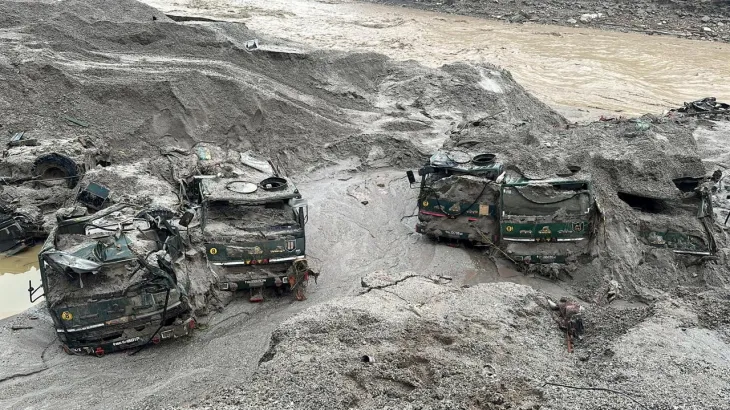Sikkim: On the night of October 3, the South Lhonak lake in the Himalayan state of Sikkim suffered a breach, resulting in a destructive glacial lake outburst flood (GLOF) that affected four districts. The disaster claimed the lives of at least 42 people, and 77 individuals remain missing over a month later. Scientists warn that the South Lhonak lake still poses a potential threat.
Located in North Sikkim at an elevation of 5,200 meters, the South Lhonak lake’s GLOF event was initially analyzed using satellite data. According to experts, on the fateful night, a slope failure occurred along the lake’s left bank, involving a mass of debris and rocks called the lateral moraine. Preliminary investigations revealed that some of the landslide material interacted with the glacier terminus, while most of it entered the lake, generating an impulse wave that moved toward the lake’s narrow front end.
This wave widened the lake’s outlet, leading to a partial breach. Additionally, there was likely overtopping as water spilled over the moraine along the lake’s outlet. The culmination of these events resulted in a GLOF that impacted approximately 88,400 people in the districts of Mangan, Gangtok, Pakyong, and Namchi in Sikkim.
The South Lhonak lake has been a known potential hazard for several years, being one of the largest and fastest-growing glacial lakes in Sikkim. Geomorphologist Dan Shugar from the University of Calgary in Canada, who is conducting research on the GLOF, noted that the lake’s area was 1.62 square kilometers before the flood, and it reduced to 1.46 square kilometers after the GLOF due to water drainage.
Dr. Sattar, a mountain hazard specialist studying the GLOF, explained that while the flood lowered the lake level, it did not drain completely, leaving a significant volume of water in the lake, which remains a potential hazard.
Compounding the existing danger, there have been continuous landslides along the slope that initially failed on October 3, as pointed out by Dr. Shugar.
The GLOF event also triggered a landslide about 30 kilometers downstream of the South Lhonak lake, leading to the formation of a landslide-dammed lake. Satellite images indicate that this lake had not drained by November 1, raising concerns about the risk of a sudden release of water downstream, necessitating continuous monitoring.


